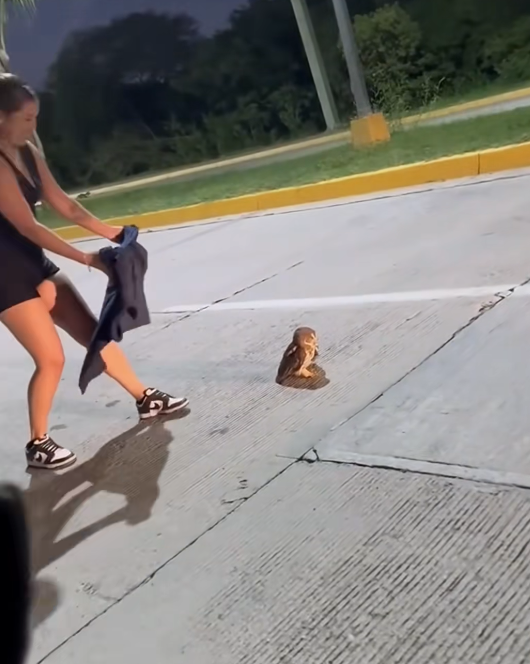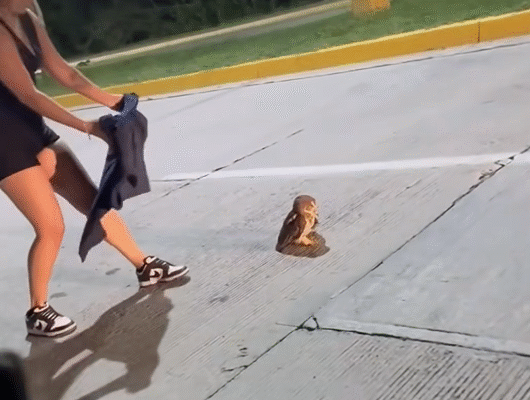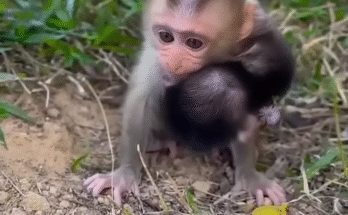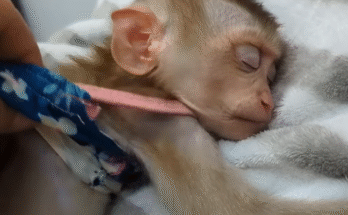It was just another quiet evening after a long day at work. The sun was dipping below the horizon, painting the sky with hues of orange and violet. I was driving along the familiar country road that winds its way through a forested stretch near my home. The air was calm, the trees swayed gently, and I had the window cracked open to let in the scent of pine and damp earth. Everything felt peaceful—until I saw something unusual lying by the roadside.
At first, I thought it was a clump of leaves or maybe a pile of feathers. But as I slowed down and pulled over, my headlights illuminated the unmistakable shape of an owl. I gasped. It was lying still, wings partially outstretched, eyes closed. My heart sank. I wondered if it was too late.

I parked the car, turned on the hazard lights, and stepped out cautiously. The evening air was cool and still. As I approached, I noticed the owl’s chest moving faintly—it was alive. Relief washed over me. I crouched down slowly, not wanting to frighten it. It didn’t react. Up close, it was clear the owl was injured. One wing looked bent at an odd angle, and there was a tiny trickle of blood near its beak. Its feathers were ruffled and dirty, but even in that state, it looked majestic—a barred owl, with dark, intelligent eyes now barely open.
I knew I couldn’t just leave it there. It was too close to the road, and even though the traffic was light, another car could hit it—or a predator might come along. But I also didn’t want to cause it more pain or stress. I remembered reading that handling birds of prey can be dangerous for both the bird and the rescuer. Still, I couldn’t walk away.
Luckily, I had a blanket in the back seat. Gently, I wrapped it around the owl, speaking softly as I did, hoping to calm it. Surprisingly, it didn’t resist—perhaps too weak or shocked. I carefully placed it in a large cardboard box I had from a recent grocery run and put the box on the passenger seat.
Back in the car, I took a moment to gather myself. I had never done anything like this before. I pulled out my phone and searched for the nearest wildlife rescue center. Thankfully, there was one about 40 minutes away. I called them, and a kind woman named Karen answered. She told me to bring the owl in and explained how to keep it calm—no loud noises, keep the box closed, and try to avoid sudden movement.
The drive felt much longer than 40 minutes. I kept glancing at the box, silently urging the owl to hang on. Occasionally, I’d hear a tiny movement or a soft rustle from inside, which gave me hope.
When I arrived at the rescue center, Karen and another volunteer were waiting. They gently took the owl and began a preliminary examination. “You did the right thing,” she said. “Most people would have just driven past.” That made me feel oddly emotional.
They told me the owl had likely been hit by a car, which is common during dusk when owls swoop low across roads while hunting. The good news was that the injuries didn’t seem fatal. It had a fractured wing and a mild concussion, but no internal bleeding. They said they’d give it pain meds and begin treatment immediately. “She’s got a strong chance of recovery,” Karen reassured me.
I left the center with a sense of purpose and deep thought. That night, I couldn’t stop thinking about the owl. I didn’t know why, but the encounter stirred something in me—a mix of awe, compassion, and connection. It’s not every day you come face to face with such a creature, vulnerable and wild, yet completely dependent on your help in that moment.
Over the next few weeks, I kept in touch with the rescue center. They named the owl “Maple” because she was found near a grove of maple trees. They updated me on her progress—her wing was healing well, and she had begun to eat on her own. They even sent a photo of her perched in a quiet enclosure, looking more alert, her feathers clean and fluffed. It made me smile.
Then, one day, I got a call. Maple was ready to be released. Karen invited me to come. I was thrilled. We met at the same forest where I had found her, a few miles deeper into the woods this time, away from the road. Karen brought Maple in a large ventilated carrier. When she opened the door, the owl hesitated for a second, then flapped her wings and rose into the air. Watching her fly again—soaring gracefully between the trees—was one of the most beautiful moments of my life.
We stood there in silence, watching as she disappeared into the woods. Karen smiled and said, “That’s always the best part.” I nodded, unable to find the words.
Since that day, I often drive that same road, always keeping a careful eye on the surroundings. I’ve also started volunteering occasionally at the wildlife center, helping with feeding, cleaning, and caring for rescued animals. I never imagined that a chance encounter with an injured owl would change my perspective so much.
Maple reminded me of the fragile beauty of wildlife and how small acts of kindness can ripple outward. The world can be chaotic and harsh, but in moments like that, when you get the chance to help something wild and vulnerable, you’re reminded of our shared connection to nature.
Now, every time I hear an owl hooting in the distance at night, I pause and listen. Part of me wonders if it might be her. And even if it isn’t, I’m glad she got a second chance to fly.



